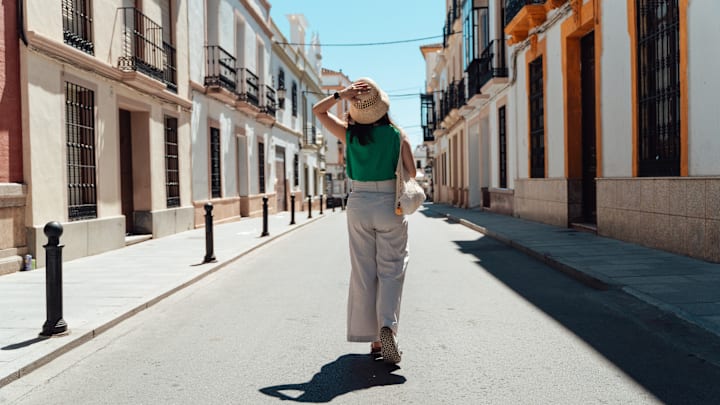Canadian actress, cookbook author, and food blogger Mairlyn Smith discusses a variety of topics on her TikTok page. Her feel-good content features everything from healthy dinner recipes to antique teacups. But her most-viewed video by far describes an activity that’s hard to say with a straight face: fart walks.
They are what you think—walks intended to release gas. In the video, Smith states that she goes on these strolls with her husband about 60 minutes after dinner for 10 to 20 minutes. She swears the activity maintains healthy blood sugar levels, facilitates digestion, and helps you “age wonderfully.” Although the phrase “fart walk” may make you giggle, the influencer is right.
Fart walks can regulate blood sugar, reducing the risk of developing Type 2 diabetes. Dr. Christopher Damman, gastroenterologist and associate professor of gastroenterology and medicine at the University of Washington, told the school’s health blog, “There’s actually some decent literature that suggests that exercise immediately after meals can be disproportionately beneficial to regulating blood sugar levels.”
People typically have increased blood sugar after eating (a.k.a. post-prandial spikes) because the body starts breaking food down into energy, releasing glucose in the blood. Levels normally regulate after the body produces insulin, but walking after a meal can minimize the size and duration of spikes. Therefore, fart walks can be particularly beneficial for people who already have diabetes.
What’s more, walking after eating helps with digestion and bloating. Daryn Herzfeld, Licensed colon therapist and founder of the holistic wellness spa Feel the Heal, explains how. “After a big, delicious meal, many of us love to lounge on the couch and binge-watch Netflix, but this can sometimes trap gas and lead to bloating,” she tells Mental Floss. “Releasing gas can reduce bloating and constipation. If you don’t let it out, you risk gas pains that can lead to back pain and even poor digestion.”
She adds, ”Taking a walk, on the other hand, gets things moving. It helps the gas travel through your colon and release faster while also encouraging your digestive system to move things along. Without trapped gas, you’re less likely to feel bloated, making a walk a simple and effective way to beat the bloat!”
The health benefits of fart walks don’t stop there. Doctors Hospital in Augusta, Georgia, shares that taking a stroll after a meal can lower blood pressure, burn a few calories, and reduce stress.
But how soon after eating should you go on a fart walk? And how brisk should the walk be?
Although Smith takes her walk 60 minutes after dinner, Dr. Herzfeld recommends a leisurely walk right after eating. Regarding the time frame, the colon therapist says, “If you wait too long, you might miss the window to avoid bloating and indigestion. Otherwise, the gas could travel upward, leading to those unpleasant, loud burps.” She also explains that taking a slow walk “gives you the distance needed for things to get moving, unlike a fast-paced walk that leaves you out of breath, thirsty, and tired, causing you to give up before the gas even has a chance to escape.” In fact, the Times of India states that too brisk of a walk after eating can actually cause discomfort and bloating—the opposite of what you want.
Smith says she walks for 10 to 20 minutes, but it’s okay to start small if walking after meals is new to you. Begin with at least five minutes a day, and then work your way up from there. Some movement is always better than none.
Read More About Health:
